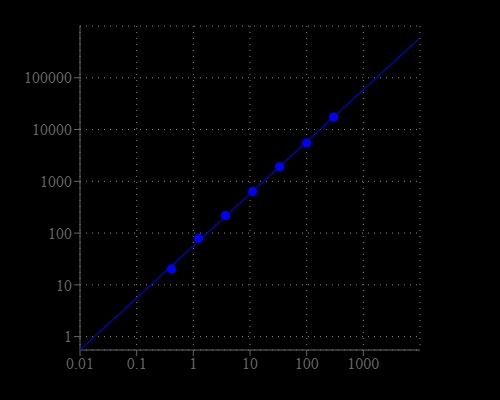Amplite® Fluorimetric L-Lactate Assay Kit
Lactic acid is chiral and has two optical isomers: L-lactic acid and D-lactic acid. Lactate is constantly produced from pyruvate via the enzyme lactate dehydrogenase (LDH) in the process of metabolism and exercise. Monitoring lactate levels is a good way to evaluate the balance between tissue oxygen demand and utilization and is useful when studying cellular and animal physiology. D-lactate is not metabolized by mammals and its elimination from the body depends mainly on renal excretion. D- and L-lactic acid are found in many fermented milk products such as yoghurt and cheese, and also in pickled vegetables, and cured meats and fish. The D- and L-lactic acid (generated by bacteria) is a quality indicator of foods, such as egg, milk, fruit juice and wine. Abnormal high concentration of D-lactate in the blood is usually a reflection of bacterial overgrowth in the gastrointestinal tract. AAT Bioquest's Amplite® Lactate Assay Kits (Cat# 13814 and 13815 for L-lactate assay, and Cat# 13810 and 13811 for D-lactate assay) provide both fluorescence and absorbance-based method for detecting either L-lactate or D-lactate in biological samples such as serum, plasma, urine, as well as in cell culture samples. In the enzyme coupled assay, lactate is proportionally related to NADH, which is specifically monitored by a fluorogenic NADH sensor. The signal can be read by a fluorescence microplate reader. With this Fluorimetric Amplite® L-Lactate Assay Kit, we were able to detect as little as 1.4 µM L-lactate in a 100 µL reaction volume.


| Catalog | Size | Price | Quantity |
|---|---|---|---|
| 13814 | 200 Tests | Price |
Storage, safety and handling
| H-phrase | H303, H313, H333 |
| Hazard symbol | XN |
| Intended use | Research Use Only (RUO) |
| R-phrase | R20, R21, R22 |
| UNSPSC | 12352200 |
Instrument settings
| Fluorescence microplate reader | |
| Excitation | 540 nm |
| Emission | 590 nm |
| Cutoff | 570 nm |
| Recommended plate | Solid black |
Documents
Contact us
| Telephone | |
| Fax | |
| sales@aatbio.com | |
| International | See distributors |
| Bulk request | Inquire |
| Custom size | Inquire |
| Technical Support | Contact us |
| Request quotation | Request |
| Purchase order | Send to sales@aatbio.com |
| Shipping | Standard overnight for United States, inquire for international |
Page updated on November 28, 2025
